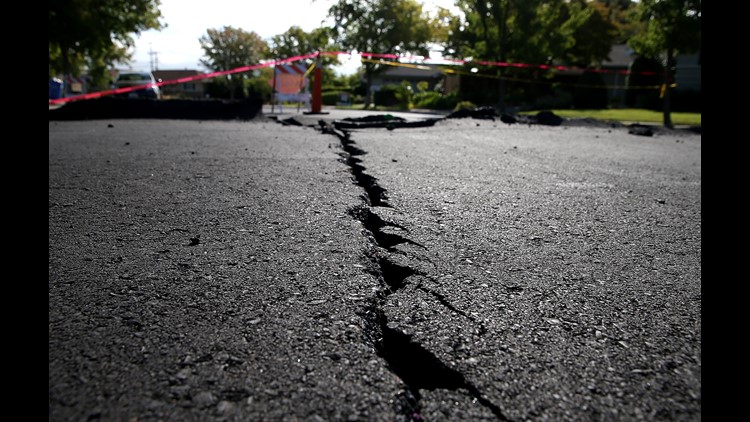If a major earthquake affected the Sacramento region, would you be prepared?
Most people wouldn't be ready, according to Dr. Graham M. Kent, who is the Director of the Nevada Seismological Laboratory-- as well as a professor in the Department of Geological Sciences and Engineering at the University of Nevada, Reno.
At least 120 people were killed and dozens are missing or feared dead Wednesday after a magnitude 6.2 earthquake struck several towns in central Italy, according to Italy's civil protection agency. The mayor of one the hardest-hit town, Amatrice, told RAI-TV that he had trouble communicating with emergency responders and couldn't reach the hospitals.
Could a similar scenario happen in our area?
Kent maps earthquake faults under Lake Tahoe. The actual fault beneath the lake is a lot bigger than the fault that led to the recent Italy earthquake, Kent said.
"Lake Tahoe has been formed by 500 to 1000 earthquakes over a few million years," Kent stated. "With every earthquake, the lake gets deeper every time."
And it's not a just few inches deeper-- the lake gets 12 to 13 feet deeper every time an earthquake hits. Another earthquake will hit, it's just a matter of when.
Although the fault under Lake Tahoe isn't as big as some major faults in California, it's still a significant size according to Kent. If a magnitude 7.0 earthquake hit Lake Tahoe, the Sacramento area and San Joaquin Valley would be affected much more than we may imagine.
Typically, seismic waves on the West Coast decrease in size quickly when compared to the East Coast, according to Kent. A decrease in seismic wave size is called attenuation. Seismic waves are largest where they are formed at the epicenter, and get smaller as they move away from the center.
But there's one exception.
"Waves traveling west from the eastern Sierra seem to not attenuate that quickly, and we know that from felt reports from eastern Sierra quakes." Kent said.
This means, an earthquake in Lake Tahoe would be felt at a stronger level in Sacramento and the San Joaquin Valley then what would normally be expected given the distance.
The 1914 Reno earthquake-- which is estimated to have been around a magnitude 6.4, according to Kent-- is an example of the effects a Sierra earthquake has on the Sacramento region.
"There was a change to the water conveyance," Kent said.
So if a magnitude 7.0 hit Lake Tahoe, the Sacramento region could expect to see greater damage than seen in 1914.
"Homes built on river sill, or weaker soil, and older buildings may see a level of damage," Kent said.
In Lake Tahoe, there would be the possibility of a relatively big tsunami and eventually, some of the docks would end up completely underwater.
"You don't want to be on a beach," Kent said.
California and Nevada officials are still trying to figure how to best prepare in the case of an earthquake, and may not figure out the details until an earthquake hits, according to Kent. For example, most people depend on their cell phones when an emergency hits, but what would happen if the infrastructure was down?
Are we economically prepared?
Tragically, death and injuries are expected in most natural disasters. But in addition to the emotional toll, the economic impact of a Lake Tahoe earthquake would be major, said Kent. Many people can't afford earthquake insurance on their homes, and public buildings would also be expensive to rebuild and repair.
"We're trying to figure it out beforehand," Kent said. "We have to be more serious about it."
For more tips on how to stay during an earthquake, visit www.fema.gov.



